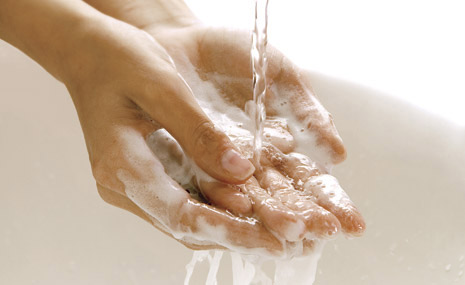Kitchen Chemistry Class
The following is supplementary information, to extend class work and lab work for my culinary students.
But if you are interested in doing some at-home science experiments, to follow is research done for you. The more that kids learn about the foods they put in their bodies, the better! Knowledge equips us to make better choices. Plus, why not get the kids doing more kitchen work, especially when it is so much fun! Seriously, I suffered through a lot of, let’s say “interesting” dishes while my kids were learning to cook… but now they can cook for me! 😀 Method to my madness.
Feel free to use this information at home and be sure to check out the sources at the bottom of the page.
And hey, we do even more cool stuff in the class, so if you can schedule a class, go for it! And I will do the work for you.
[fancy_header2 variation=”green”]Question[/fancy_header2]
How can we use chemistry to create emulsified
oil and vinegar dressing recipes?
What We Will Learn
- How an emulsion works.
- How to develop a simple recipe.
- Culinary skill: How to make your own salad dressings from real food. No need to buy bottles again.
[fancy_header2 variation=”green”]Vocabulary[/fancy_header2]
emulsion: a colloid of two or more immiscible liquids where one liquid contains a dispersion of the other liquids
surfactant: “surface active agent”; substance that, when added to a liquid, reduces its surface tension, thereby increasing its spreading and wetting properties
chemical bond: a mutual attraction between two atoms resulting from a redistribution of their outer electrons
hydrophilic: water loving; will easily dissolve in water
hydrophobic: water hating; will not mix with water
[fancy_header2 variation=”green”]Emulsions[/fancy_header2]
Emulsions
An emulsifier is a substance which brings together and stabilizes two liquids.
Example: Oil and water do not mix. But if you add an emulsifier, like mustard, egg yolk, or honey, they will combine and hold together, creating an emulsion.
How does an emulsifier work?
This may be my favorite food chemistry analogy EVER! It came from the Food Lab in an article written by this brilliant guy – J. Kenji López-Alt.
When trying to understand how an emulsifier, or surfactant, like mustard, honey, or egg yolk, can bring together oil and water molecules – which are repelled by each other, think of Catdog.
Oil and vinegar molecules do not like to touch. They are completely repelled by each other. Kind of like cats and dogs… typically. Sooooooo….
If vinegar molecules are cats and oil molecules are dogs … then a surfactant, like mustard, is catdog.

Yep, that disturbing cartoon from a few years back, created by Peter Hannan for Nickelodeon. Catdog has one side that will attract cats and the other to attract dogs, bringing them all together into one harmonious union… theoretically.
Instead of cats on one side and dogs on the other…

with enough catdogs in the room, they would all mix together. Cats and dogs all over the place!

An emulsifier or surfactant, like a mustard molecule, or egg yolk, or honey, or lecithin, has one side that attracts oil and the other side that attracts vinegar. So the emulsifier holds the water and oil together.
Check out this image from scienceteacher.org. One part of the molecule is hydrophilic and will attract water, or in the case of a vinaigrette, vinegar. And the other part is hydrophobic; it repels water but will attract oil!
The emulsifier can hold on to both vinegar or water AND oil, bringing it all together into a stable emulsion.

Her is another emulsifier molecule image from BBC.

Here is another example of an emulsifying surfactant. Soap!
If you have ever tried to wash oil off of your hands with water only, then you know what a frustration this can cause. The water just swooshes over, leaving the oil still on your hands. But add soap and what happens? The oils washes away beautifully. Why? Because soap is filled with a surfactant. One side of the surfactant molecules sticks to the oil and the other side sticks to the water. So as water flows over your soapy oily hands, everything is washed away.
Go ahead… try it out! When you make your oil and vinegar dressings, try washing oil off your fingers with water only, then with soap. Chemistry in action!

[fancy_header2 variation=”green”]Experiment[/fancy_header2]
An easy and extremely useful kitchen emulsion experiment involves making salad dressing. Plus, if you learn how to make a simple vinaigrette, you never have to buy a bottle of dressing again!
You will need:
- Oil: extra virgin olive oil is delicious, but try other oils too… canola, avocado, macadamia nut, almond, whatever you can get.
- Vinegar: apple cider, balsamic, white wine, red wine, distilled, any vinegar you like!
- Emulsifier: mustard, honey, or mayonnaise (for egg yolk)
- Optional: herbs for flavor, such as garlic powder, onion powder, parsley, tarragon, basil, etc
- Salt and pepper, to taste
Generally, you want a ratio of about 3:1, oil to vinegar. Example: 3/4 cup extra virgin olive oil to 1/4 cup balsamic vinegar. (This would be a lot of dressing!) Whisk in a bowl or shake in a sealed container.
Notice how the oil and vinegar separate if left sitting.
Now add your emulsifier, just a bit at a time. Whisk it in. Notice how the mixture stabilizes. Try different emulsifiers in separate containers to see which ones work best.
Add any herbs and flavors you like, plus salt and pepper. Taste. Enjoy consuming your science!
Tip: Taste your vinaigrette on a lettuce leave, instead of a spoon, to get a better idea of how it will taste on a salad.

If you like this, please Pin, Share, and Like
[pinterest] [fblike] [tweet]
